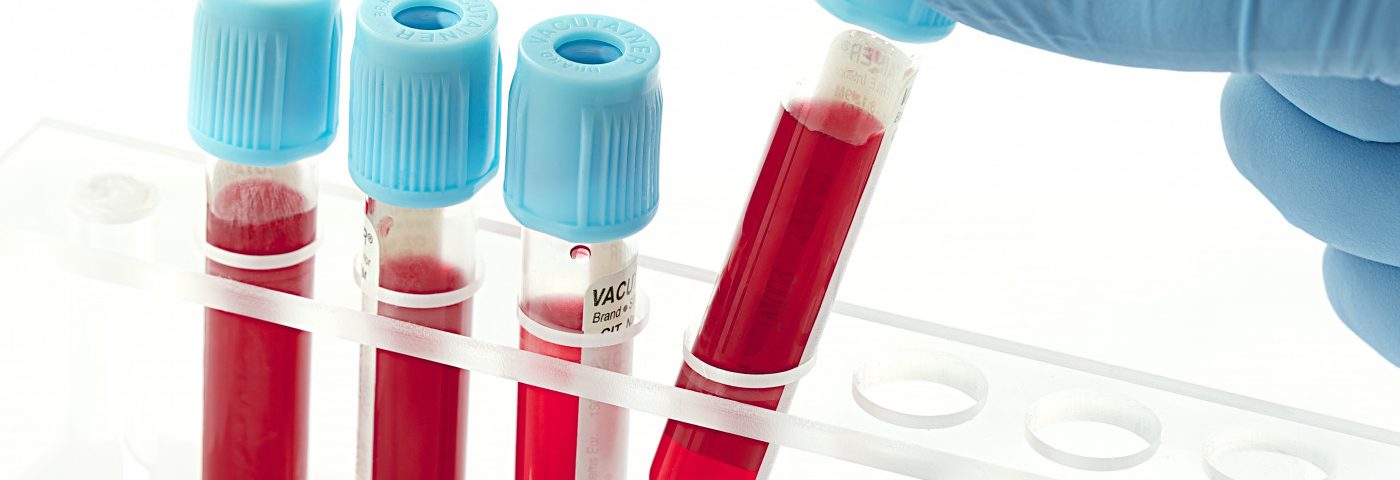Proposed new cut-off levels for values of very long-chain fatty acids, or VLCFAs — whose buildup characterizes X-linked adrenoleukodystrophy (X-ALD) — show higher sensitivity and specificity for detecting genetically confirmed X-ALD.
Using these revised cut-off levels could improve the accuracy of X-ALD diagnoses, according to researchers.
Those are the findings of a new study, “Defining diagnostic cutoffs in neurological patients for serum very long chain fatty acids (VLCFA) in genetically confirmed X-Adrenoleukodystrophy,” published in the journal Nature Scientific Reports.
X-ALD is caused by mutations in the ABCD1 gene. These mutations lead to the accumulation of a type of fat, called saturated very long-chain fatty acids (VLCFA), in tissues like the brain and spinal cord — and also in the blood. In fact, elevated levels of VLCFA in the blood are used in the diagnosis of X-ALD, mainly of cerotic acid (overall reference range 0.15–1.9 micromol/L) and lignoceric/behenic and cerotic/behenic acids ratios.
The levels of VLCFA in the blood are interpreted using reference ranges obtained from healthy people (controls). However, it is estimated that 2.5% of healthy people have values comparable to X-ALD patients. This means that 25 people in a group of 1,000 healthy individuals would have high levels of VLCFA, which could lead to a false diagnosis of X-ALD.
As a rare disease, “this number of false-positives is too large to allow screening for X-ALD in neurologically affected patients,” the researchers wrote, suggesting that “instead of using reference ranges, the establishment of a threshold or cutoff is more helpful for the clinician in the case of X-ALD.”
The team, led by researchers at the University of Tübingen, in Germany, thus set out to define new cut-off levels for values of VLCFA in the blood that could improve the accuracy of X-ALD diagnoses.
Blood samples from 1,953 people, collected between January 2008 and January 2020, were analyzed by the researchers. In total, 45 samples had elevated levels of at least one VLCFA molecule (behenic acid, lignoceric acid or cerotic acid).
All 45 samples were genetically tested. In 30 cases, the patients had a confirmed mutation in the ABCD1 gene; this patient population was identified as the X-ALD group. In 15 cases, no mutation or underlying disease was identified; these were identified as the non-X-ALD group.
To evaluate a possible relation between VLCFA levels and fats (lipids) in the blood, the researchers analyzed the lipid profile of the samples. In 10 samples with elevated VLCFA, cholesterol and/or triglycerides (two types of fat) also were elevated. However, when accounting for the VLCFA ratios between different fatty acids, only three samples showed an elevated ratio of lignoceric/behenic.
The researchers then compared the X-ALD cases with high VLCFA levels with the non-X-ALD group and found a significant correlation between cholesterol and VLCFA levels. Specifically, the correlation was seen between the levels of LDL — low-density lipoprotein, which often is called “bad” cholesterol — and the levels of lignoceric, behenic, or cerotic acids.
Next, a subset of 153 cases with similar VLCFA values was analyzed to evaluate current thresholds and identify new VLCFA cutoffs. This group included 34 cases of genetically confirmed X-ALD.
Using current cut-offs, the results showed that lignoceric acid levels below 85 micromol/L had a sensitivity of 36.4%, a specificity of 88.2%, and positive predictive value (PPV) of 48%. Levels of cerotic acid below 1.9 micromol/L had a sensitivity of 66.7% and a specificity of 99.2%, with a PPV of 92%.
Of note, a test’s sensitivity is its ability to correctly identify those with a given disease, while specificity refers to accurately identifying those without that disorder.
In terms of ratios, a lignoceric/behenic acid ratio below 1.11 had a sensitivity of 90.9%, a specificity of 96.6% specificity, and a PPV of 91%. In turn, a cerotic/behenic acid ratio below 0.04 had a sensitivity of 66.7%, with a 100% specificity, and PPV of 96%.
To reach an even higher sensitivity to identify X-ALD cases, the team evaluated new cutoff values and proposed the following: behenic acid below 105 micromol/L, lignoceric acid below 92 micromol/l, cerotic acid below 1.2 micromol/l; and a lignoceric/behenic acid ratio below 1.0 (sensitivity of 97%) and a cerotic/behenic acid ratio below 0.02 (sensitivity of 90.9%).
With these new cutoff values, researchers found that the sensitivity particularly increased, by 15.1% for cerotic acid, 6.1% higher for lignoceric/behenic acid ratio, and 24.2% for cerotic/behenic acid ratio.
“We suggest to use our new optimized cutoff values, especially the two ratios [lignoceric/behenic acid ratio below 1.0 and a cerotic/behenic acid ratio below 0.02], in combination with standard lipid profiles as a screening tool,” the team wrote.
“These adjusted cutoffs will lead to increased sensitivity for the detection of X-ALD in neurodegenerative patients if routine serum lipid levels are within normal ranges, as these are important in identifying false-positive elevated VLCFA levels,” the researchers added.


